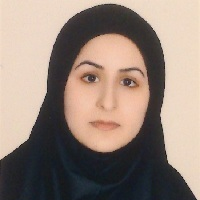The Comparison and Analysis of the Expansion of Salt Lands of Lake Urmia Using the Field Data, Satellite Imagery and Geomorphic Faces of the Region
Author(s):
Article Type:
Research/Original Article (دارای رتبه معتبر)
Abstract:
Introduction
Lake Urmia in the northwest of Iran has faced a steady decline over recent decades. This has led to an increase in the level of dry lands and, consequently, has caused many environmental and social problems.There are many ecological effects on the biodiversity and growth of Artemia, the Zooplankton, a native of Lake Urmia and major source of food for large birds. Consequently, the monitoring of coastal areas and the extract of changes in these areas in different time intervals have great importance because the nature of the coastline is dynamic. For this purpose, the remote sensing technology has a unique application in the acquisition of information about these phenomena because multi-spectral satellite images have advantages including their availability and digital interpretation.The purpose of this research was to investigate the development of the North West salt land in Lake Urmia using field data, satellite imagery, and geomorphic faces of the region.
Methodology
This research was an applied type and the data was collected through library, laboratory, and field studies. The statistical population was the water Retreat Zone of Lake Urmia Which suffered from wind erosion. This research was carried out using satellite imagery and multiple observations. Also, test sediments were obtained from this area using standard methods. Using remote sensing technology, when combined with land surveys and ground-based results, can provide better and more reliable results. For this purpose, in the present research, along with the use of remote sensing methods, field studies were also used. To carry out this research, samples of lake sediment were taken in different transects from a specific area in the northwest of the lake. The saturated extract of each sample was measured by EC meter. In the next step, using satellite imagery and field survey, the salinity, the expansion of salty and geomorphic faces were extracted. Finally, the results of the field and laboratory data, satellite imagery and geomorphic faces were compared and validated.
Results
The results showed that the surface area of the lake water was very low and spread to vast amounts of salt. Accordingly, the area of the salt land has significantly increased since 2000, especially over the past decade. According to the results of the field studies, areas with higher salt density matched the salt lines obtained from satellite imagery and geomorphic faces. The study area had 12 faces. The harvest area with a total area of 2,641 ha in the central part of the range and sandy areas with a total area of 14 ha in the northwestern part of the area had respectively the highest and lowest extent of outcrops in the studied area. Consequently, there was a close correlation between the field data and satellite imagery and salt land areas in satellite imagery and results of field studies. Due to the increase of the salinity levels in the area around the lake, local winds, and time lapse, the Agrarian lands of Azerbaijan general zone moved towards salinization and desertification. If this trend continues at the same speed, undoubtedly, in the long run, we have to wait for the enormous environmental crisis in the region.Discussion and
conclusion
The strongest indicator to extract the salt is the SI2 indicator with an accuracy of 97% and the weakest indicator is NDSI indicator with a precision of 52%. The EC value in 22 soil samples ranging from 0.9 to 78.37 indicates the high salinity variability in the region. There is the highest correlation with visible bands and infrared bands 1, 2, 3, and 4, which indicates that the saline soils in the visible and infrared areas have a higher reflection. Between 2006-2015, the range of salt land has been expanded. Altogether, with the decreasing trend of the size of Lake Urmia, in 1976 regular domain faces, in 1985 sediment removal, in 1990 harvested area, in 2000 wet area, harvested area, and salt deposits, in 2006 bar salt and salt zone, and between 2011 and 2015 salt zone were formed and expanded.Keywords:
Language:
Persian
Published:
Hydrogeomorphology, Volume:5 Issue: 17, 2019
Pages:
185 to 203
magiran.com/p1944722
دانلود و مطالعه متن این مقاله با یکی از روشهای زیر امکان پذیر است:
اشتراک شخصی
با عضویت و پرداخت آنلاین حق اشتراک یکساله به مبلغ 1,390,000ريال میتوانید 70 عنوان مطلب دانلود کنید!
اشتراک سازمانی
به کتابخانه دانشگاه یا محل کار خود پیشنهاد کنید تا اشتراک سازمانی این پایگاه را برای دسترسی نامحدود همه کاربران به متن مطالب تهیه نمایند!
توجه!
- حق عضویت دریافتی صرف حمایت از نشریات عضو و نگهداری، تکمیل و توسعه مگیران میشود.
- پرداخت حق اشتراک و دانلود مقالات اجازه بازنشر آن در سایر رسانههای چاپی و دیجیتال را به کاربر نمیدهد.
دسترسی سراسری کاربران دانشگاه پیام نور!
اعضای هیئت علمی و دانشجویان دانشگاه پیام نور در سراسر کشور، در صورت ثبت نام با ایمیل دانشگاهی، تا پایان فروردین ماه 1403 به مقالات سایت دسترسی خواهند داشت!
In order to view content subscription is required
Personal subscription
Subscribe magiran.com for 70 € euros via PayPal and download 70 articles during a year.
Organization subscription
Please contact us to subscribe your university or library for unlimited access!



